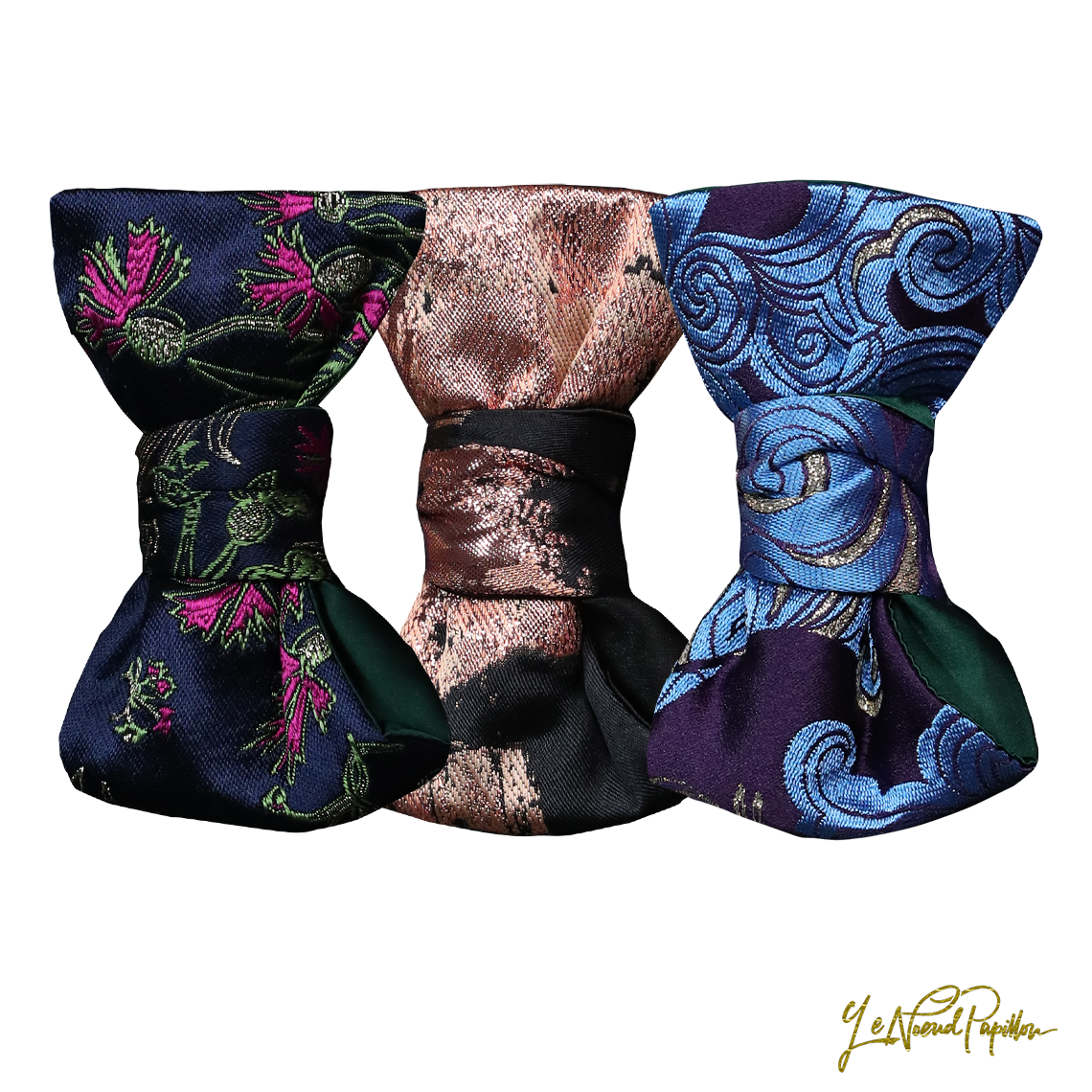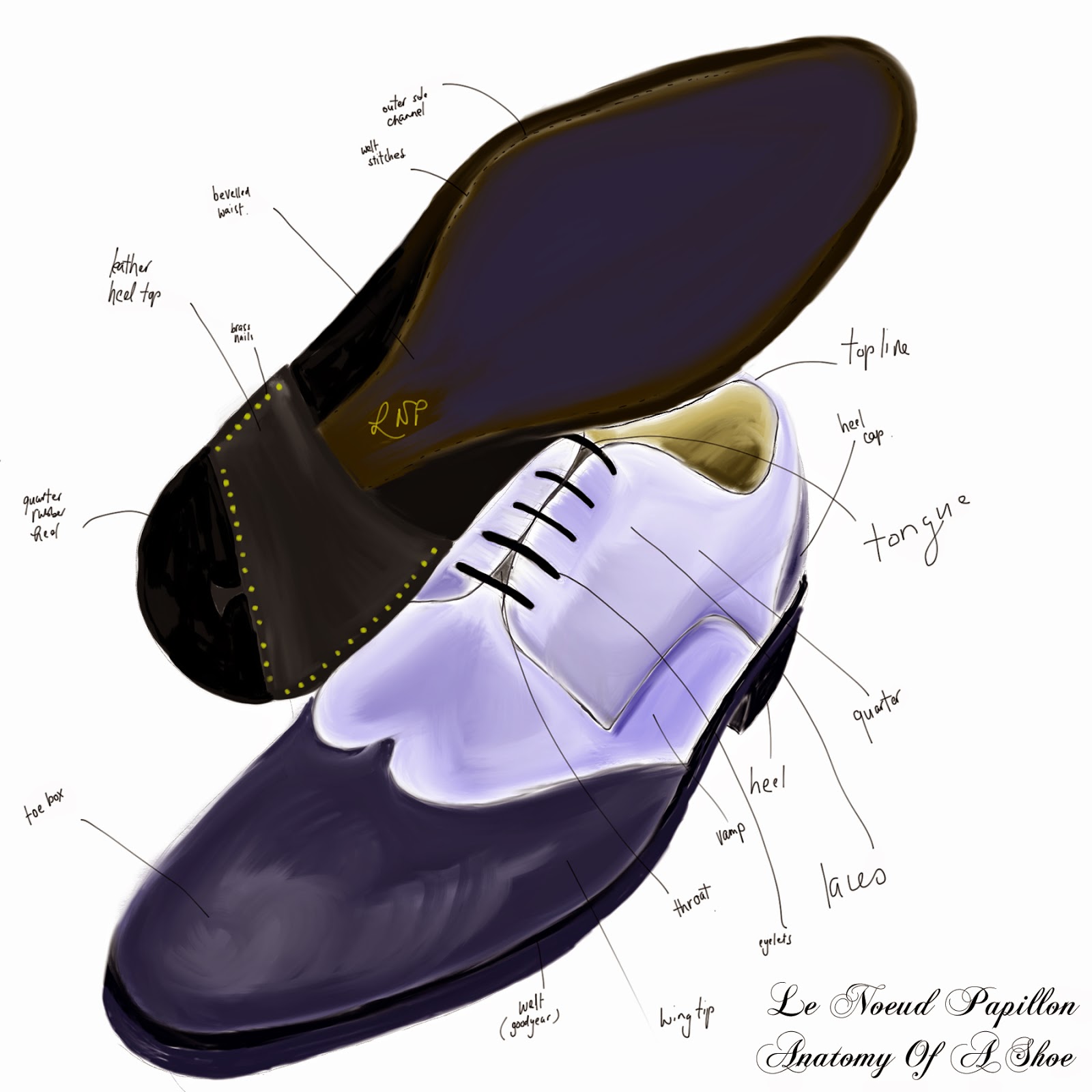Men's shoes are all made differently and, for example, there is a substantial difference in design and components between the shoe above, a wing tipped Oxford, and say a whole cut shoe which has no vamp, no quarter and no wingtip. Needless to say that when you are looking to buy a shoe, it helps to know what all the add ons are and to be able to describe a shoe adequately enough so that you don't go home with something you didn't go searching for. I certainly did not know all the elements of a shoe until recently and, quite frankly, I could tell you that very few staff in Sydney's shoe stores could tell you either. We should all thank our lucky stars for the internet.
Above you will find some common terms that are used to describe shoes. I will give a brief explanation of each.
Heel: Made of leather and sometimes rubber, the heel is a number of layers of leather glued together which forms a raised platform at the rear of the shoe on which the heel of the foot sits.
Vamp: The area of leather between the toe box and the quarters.
Tongue: The leather which protrudes from the throat of the shoe above the laces.
Throat: The area from the vamp to the tongue of the shoe which is concealed by the laces.
Eyelets: The perforated holes which feed the laces through and bind the shoe together.
Laces: Usually made of leather fibres and fed through the eyelets to close the shoes.
Waist: The area between the sole and the heel. In upmarket men's shoes the waist is sometimes bevelled for effect.
Brass nails: In some shoes you will see brass nails in the heel and sometimes in the sole. Sometimes they are used as a function bond the heel to the sole, other times they are used for decorative purposes such as inscribing the logo of the production house.
Wing Tip : A cured piece of leather which covers the toe box and is stitched to the vamp. Another variation of the wingtip is a toe cap which forms a dome at the end of the shoe.
Welt : I labelled this goodyear since this is the most popular way in which the welt is attached to the shoe. There is also another way which is common with the Europeans and this is called the Blake-Rapid method which is slightly more sleek as the sole is attached directly to the shoe.
Welt Stitches: On the sole of the shoe you will be able to see the stitch marks of the shoe where the sole has been attached to the welt.
Toe Box: This is the area where the leather is stretched most tightly across the shoe and where your toes will be sitting if you press down on the the leather. It is also where you get the best effects for mirror shine and some forms of patina.
Out Sole Channel: This is a groove in which the stitches are made between the welt and the sole. The channel protects the stitches from being eroded too quickly so that the shoe does not fall apart.
I hope this is a practical and helpful diagram and if you have any other questions please let me know. As my knowledge is still somewhat limited, I may not be able to answer specific construction questions but I will be able to point you in the right direction to an expert.


No comments:
Post a Comment